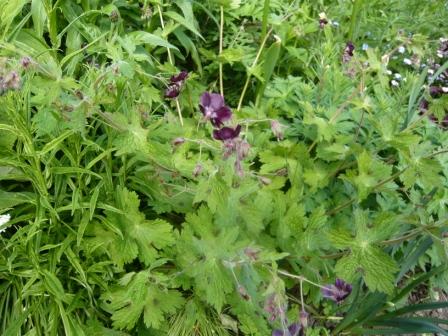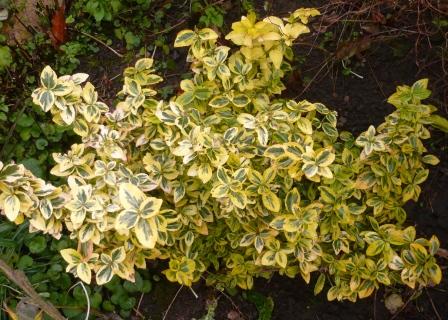
Shade and Dry Areas
Try the shade test. If you can’t see to read then plant a fountain as no plants are likely to thrive.
If you can only just read then try Ivies, ferns, mosses, box, Ruscus aculeatus an evergreen shrub or craggy moss & lichen covered stones.
Under a deciduous tree spring bulbs, berberis and some clematis may be good doers.
Lightly wooded areas are havens for hostas, hellebores, solomons seal, trillium and choisya amongst others.
Dry Shade is one of the least hospitable places in the garden but some flowering perennials will thrive. A modicum of sun or light will suffice to provide this more interesting top ten.
Top Ten Dry Shade Perennials
1. Convallaria majalis or Lily of the Valley will provide scented bell shaped flowers and spread from underground shoots
2. Meconopsis cambrica Welsh Poppy with single yellow or orange flowers has fern like foliage
3. Lamium maculatum or the Spotted Deadnettle is semi-evergreen.
4. Geranium macrorrhhizum or Balkan Cranesbill has magenta flower sprays and covers the ground quite quickly.
5. Iris foetidissima has sword shaped leaves and flowers that produce orange seed heads for winter.
6. Tellima grandiflora has mounds of evergreen hairy heart-shaped leaves and spires of cream flowers.
7. Lunaria or Honesty flowers in the shade then produces interesting seed heads through winter.
8. Viola labradorica Purpurea is a reliable little Violet with small purple flowers.
9. Epimedium pinnatumn or Epimedium pubigernum are evergreen.
10. Pachyphragma macrophyllum is a ground cover perennial with white flowers.

Other Issues with Dry Shade Perennials
- Make the best use of the conditions you have and select appropriate plants.
- Working with nature and not against. Give nature a helping hand with water retaining mulches, thinning overhead branches that cast shade and irrigating where practical.
- Woodland plants are generally more tolerant of dry shade as they have learnt to cope with thirsty tree roots that impoverish the soil.

Planting the Dry Shade Garden: The Best Plants for the Toughest Spot in Your Garden by Graham Rice
- Read more about Shade Loving perennials and Shade Loving Ground Cover Perennials.
Beth Chatto and shade loving plants
One of the toughest spots to grow plants is in dry shade. Here is my pick of those shrubs that will be ‘good doers’ in these conditions.
Box or Boxus sempervirens will grow up to 12 feet high and wide in dry shady conditions. The variety Latifolia maculata, with it’s agm, has bright yellow, young leaves becoming dark-green, blotched with yellow when mature (this gives it the common name Sunshine box). It is good a good evergreen for topiary and hedges.
Hypericum calycinum, Great St Johns Wort or Rose of Sharron is a low growing shrub with yellow flowers followed by black seed bearing berries. It grows up to 2′ tall but can spread 10′ or more.
Lonicera pileata is a species of honeysuckle used for hedging. It is called the Privet honeysuckle and can grow up to 8 feetwide and a couple of feet tall.
Euonymus fortunei is an ideal evergreen shrub available in several leaf colours. I find the yellow leaves perform well in the cool shade.
The following selection may also be fine but the above plants were recommended by the RHS
Daphne laureola and Laurel
Fatsia japonica castor oil plant
Hedera, Ivy
Ilex aquifolium Holly
The RHS also consider the degree of shade as follows:
‘1. Light shade: A site that is open to the sky, but screened from direct sunlight by an obstacle, such as a high wall or group of trees.
2. Partial shade: A site receiving sunlight for two or three hours either in early morning or late evening. Midday sun supplies considerably more light.
3. Moderate shade: Mainly reflected or diffused light, for example through tree canopies.
4. Deep shade: Usually under dense deciduous trees, e.g. beech, conifer hedges or overgrown shrubberies.’


One thought on “Shade and Dry Areas”
Comments are closed.